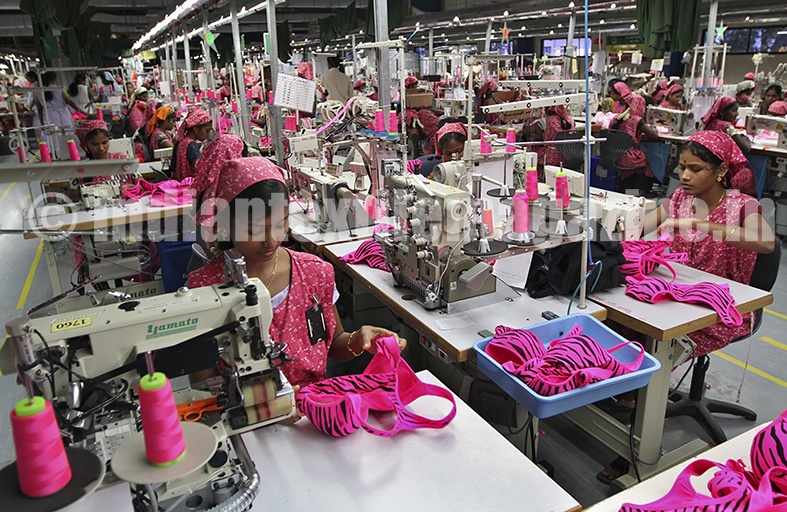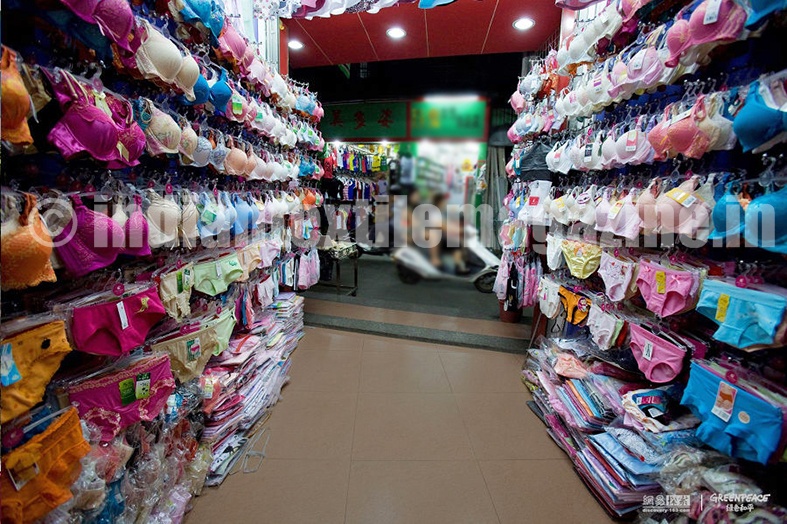The Innerwear Category is one of the high growth categories in the apparel market and promises growth and innovation. The higher income, along with higher discretionary spending, growing fashion orientation of consumers and product innovations by the innerwear market have turned innerwear from a traditionally utilitarian item to an essential fashion requirement.
The current size of the Indian innerwear market is Rs. 15,870 crores ($2.9 billion). The category is also growing at an impressive CAGR of 12 per cent and is expected to reach Rs. 27,900 crores ($5.1 billion) by 2017. The womens innerwear market, which is driven by value-added innerwear products, contributes around 60 per cent to the market.
The growth of the innerwear category is primarily centered in urban India. The trend towards Western outfits, combined with the demand for occasion and outfit-based innerwear, is acting as a boost for the market. Demand for innerwear with higher functionality and greater comfort is rising fast. The market for innerwear product variations like seamless intimates, plus size inner wear, body shape enhancers, etc., is burgeoning both in the metros and mini-metros.
Men’s innerwear market
The men’s innerwear market, worth Rs. 6,330 crores ($1.2 billion), is characterized by the presence of numerous Indian and international brands catering to different segments of the market. Though many fashion / apparel players have extended their existing brand labels in menswear to men’s innerwear as well, the product recall of players with focus solely on innerwear products is comparatively higher.
The different sub-categories of men’s innerwear include vests, briefs / boxers, basic T-shirts, shorts / pyjamas, sleepwear and activewear. Consumers mostly purchase branded products for vests and brief / boxers, which are the largest category offerings from leading innerwear brands.
On the basis of product pricing, this market is further sub-divided into super premium, premium, medium and economy segments. The economy segment contributes around 56 per cent to the market, while the mid-price segment makes up 30 per cent, the remaining 14 per cent comes from premium and super premium segments. The premium and mid-price segments are expected to witness a higher growth rate within this market. In these segments, the consumer seeks higher fashion orientation and higher comfort, as well as a strong brand name. The younger consumers in the metros engage with brands primarily within the premium segment.
It has been observed that consumers in the Tier-I cities play across segments, i.e., premium as well as mass segment. However, the premium segment largely fuels the aspiration quotient. In the mid-price and economy segments, value for money, easy availability and comfort play a vital role in the consumers’ purchase decisions.
These consumers, of men’s innerwear, can be segregated into four groups on the basis of their attitude towards innerwear products and their buying behavior. These are: Young Aspirers, Discerning Urbanites, Optimistic Pursuers and Corporate Climbers. The Young Aspirer Group comprises men in high-paying jobs who have high disposable incomes. They are ambitious and demonstrate a keenness to purchase branded innerwear.
The Discerning Urbanite Group consists of men in well-payed jobs but evaluate value on a benefit and convenience metric rather than purely on price. They engage with innerwear brands for the promise of quality and show no qualms paying a premium when quality is assured.
The Optimistic Pursuer Group includes men from smaller cities who are eager to pursue a prosperous lifestyle. They aspire to have a metro-like life and seek opportunities to experiment with aspirational brands. The Corporate Climber Group of consumers is made up of men who dream big and are keen to make a place for themselves. They have high aspirations, and want to engage with brands. But with limited disposable incomes, these people are cautious buyers.
Women’s innerwear market
The women’s innerwear market worth Rs. 9,540 crores ($1.7 billion) is one of the fastest growing categories within women’s apparel. This category is growing at a CAGR of 14 per cent, and is expected to reach Rs. 18,380 crores ($3.4 billion) by 2017.
The women’s innerwear market is considered to be more dynamic, with many design variation and the regular introduction of innovative products. Contrary to men’s innerwear where a consumer comes across advertisements for several brands on a daily basis, brand promotion and advertising activities are comparatively lower in women’s innerwear.
The sub-categories in women’s innerwear include brassieres, panties, camisoles, basic T-shirts, shorts / pyjamas, sleepwear, activewear and maternity wear. Consumers in this category mostly purchase branded brassieres and panties, which constitute more than 90 per cent of the category mix. However, the penetration of brands is comparatively low for other sub-categories like camisoles, sleepwear, etc.
When it comes to price-wise segmentation, the women’s innerwear market is dominated by products of the mid-price and economy segment. These segments together contribute 80 per cent of the market, while the remaining 20 per cent comes from the premium and super premium segments. Like men’s innerwear, the mid-price and premium segments are expected to grow more rapidly within women’s innerwear categories.
On the basis of demographics, behavior traits, lifestyle activities and purchase patterns, the typical consumers of the women’s innerwear market can be divided into three distinct categories: Urbane Enthusiasts, Exuberant Seekers and Thriving Homemakers. The Urbane Enthusiasts consists of young women with well-paying jobs who engage themselves with brands. The consumers in the Exuberant Seekers category live in mini metros and tend to be ambitious and keen to make a mark for themselves. They are normally keen to experience modern retail formats and try aspirational innerwear brands.
Consumers belonging to the Thriving Homemaker category generally live in smaller cities. As homemakers, they do not have high disposable incomes and are primarily value seekers.
Future outlook
Simply put, the future of the apparel market and the innerwear category looks promising. At the same time, fashion retailers have to face some daunting challenges prior to tapping the extant opportunities. Rising real estate costs, increasing power tariffs and supply chain inefficiencies are some of the issues that have to be tackled with utmost prudence. The growth story of Indian consumption is expected to revive in the medium to long term, but it will require improvements in the overall business performance and managerial prudence of the highest degree to benefit from this growth.
To emerge a winner in a market marked by the presence of multiple players, brands and retailers have to optimize their business operations by addressing the challenges and harnessing market opportunities. Understanding the psyche of the Indian consumer, amalgamating the Indian style of functioning with Western management techniques and tailoring fashion offerings to defined consumer segments are some of the key areas upon which fashion and innerwear players have to focus.
The Indian apparel market has demonstrated resilience and growth in an environment characterized by slow economic growth. Worth Rs. 2,07,400 crores ($38 billion) as of 2012, it is expected to grow at a compound average growth rate (CAGR) of nine per cent over the next decade. Further, the recent omission of excise duty on branded apparel has provided an impetus to retailers in terms of the overall market sentiment.

